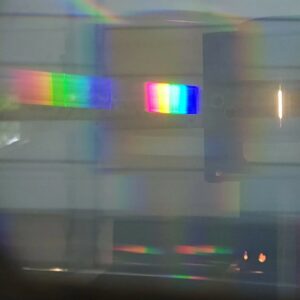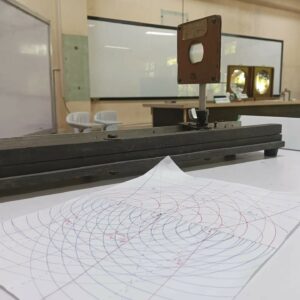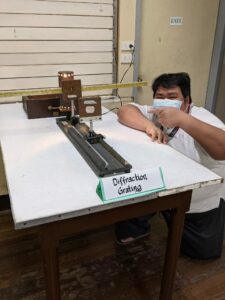Presenting Science without the Overly Complicated Math…
Teaching is a challenging endeavour. Learning any field of Science is also as hard. Combining the two is to try and conquer a seemingly insurmountable mountaintop, but don’t worry, the view makes it all worth it in the end. Science-teaching is not exactly a new field. From our stone-age ancestors passing down their knowledge of the seasons and which plants are beneficial to the college classroom where formulas are written on a whiteboard and evaluations are done with pen-and-paper tests, we have never stopped teaching science to newer generations.
However, as the sciences progress, it becomes harder to teach them. Complex concepts require the mastery of various mathematical techniques. Yes, even fields like Biology and Psychology have complex math. Math is unavoidable.
To teach science is to teach math. The more complex the science, the more complex the math needed to explain it. However, you can get away with teaching science by simplifying the math. This is great when you don’t have the luxury of time (a half-year college subject) and place (a classroom), such as at open-house events, science fairs, or even YouTube videos. In fact, if you pay attention, most of the successful science YouTubers use these techniques to deliver their points across.
-
Choose a Topic and Learning Aid
You can choose almost any topic to teach, from basic cell division to quantum mechanics. However, a good rule of thumb to follow is that you must be able to show “how the science is done” with your chosen topic. Cell division is relatively simple to show in a laboratory class, but you can’t really demonstrate it in a science fair. The properties of quantum mechanics can be shown using high-energy and high-precision instruments, but good luck explaining how to operate those instruments to a crowd of teens.
More complex topics can be chosen if you’re doing a video presentation since a lot of the “how the science is done” can be added through clips or animations during the editing and post-processing. For face-to-face demonstrations, however, you must choose something simpler.
Your audience learns through their senses. As such, choose a topic which can be seen, heard, felt, smelled, and/or tasted. This is where the proper learning aid comes along. An experiment set-up is the easiest, as it allows the audience to also be participants. Choose carefully, however, as your audience would prefer watching a chemical change colour, electricity jump through wires, or rainbow lights move up and down, compared to counting buttons and baubles. Catch their interest with your learning aid, then do the explanations while they are interacting with the experiment. The key points here are “learning through the senses” and “learning through interaction.”
Figure 1. The author posing with a Diffraction Grating Experiment which shows the effect of multiple-slit light diffraction.
-
Research and Do the Math Yourself
You’ve got a topic and a learning aid? Good! Now it’s time for you to do the inevitable: the math. Whether you learned it through the classroom or through videos, you must have mastery over the math of the topic you’re about to discuss to a crowd. Being familiar with the concepts can only get you so far. Ask for help if you need to. Read books. Watch video tutorials.
When the audience starts asking you questions, you can’t just rely on surface-level knowledge to explain why the learning aid is behaving the way it is. Knowing the math means you know the ins and outs of the topic. Knowing the math tells you how the experiment will behave once you start changing variables.
And explore the math! A mathematical sentence is a statement of relationships. By knowing how the variables are related to each other, you can arrive at findings that are not outright stated in books and tutorials. These discoveries could lead to more interesting behaviours in your learning aid.

Figure 2. The calculations that were done to determine the light intensity of the multiple-slit light diffraction experiment.
-
Streamline your Talking Points
After all that research and math, you must create a story. Your audience has a limited amount of attention and energy to give, so you must budget your time with them wisely. Once you’ve explored the math, choose two or three topics you want to share. Arrange them so that the first topic leads to the next, and the next leads to the last. Different people tell stories in different ways, but here’s a good flow of discussion to start with:
- Explain the broad strokes of the topic you want to discuss.
- Guide your audience with the learning aid so that they observe your topic 1.
- While the audience is exploring the learning aid, explain the concept of topic 1. Use the learning aid to demonstrate.
- Use the learning aid to transition into topic 2. You can do this by doing changes to a different setting or variable. Then, let the audience explore your learning aid.
- Explain topic 2, using the learning aid to demonstrate when necessary.
As you discuss more and more, take note of which part you need adjustment on. Afterwards, change your flow as necessary. Don’t be afraid to experiment.

Figure 3. A gap between the two rainbow beams as seen from behind the diffraction grating. By simply zooming in, the topic can be shifted from the general overview to the specific behaviour of light.
-
Use Shapes and Movements
Often, you need more than just your learning aid to explain the science of a phenomenon. Experiments can only bring you so far. Yes, they show you how a thing is done, but they don’t often show why a phenomenon behaves like it is. If you are exposed to math, you can determine the behaviour of the phenomenon just through the math – but your audience most probably isn’t exposed to complicated math.
Enter shapes and body language. Geometric representations have been used to illustrate concepts since time immemorial. By using shapes—be they lines, boxes, arrows, or waves—you can illustrate how the phenomenon moves and behaves. A whiteboard and marker are best for this since they show how a “thing” moves in the experiment. However, this can still be done with regular pen and paper, just augmented with body movement for emphasis.
Using your body language to help amplify the movement or behaviour of the phenomenon would also make your audience understand what you are talking about better. Shake your hands and arms when describing the motions of waves. Snap your arm out and point to emphasize to your audience that a “thing” is moving. Use not just your brain, but also your body.

Figure 4. A geometric representation of how light behaves after passing through the diffraction grating.
-
Explain What Makes the Topic Relevant
And when all the explaining is done, finish with a flash-forward to the present, and even the future. Tell your audience how the phenomenon you just discussed with them led to the discoveries and technologies today. Tell them how the math used in modelling the topic you’ve made them learn is now the basis of modern learning. After all, every small topic to a modern student was once a revolutionary idea hundreds or thousands of years ago. Make them appreciate the progress of human knowledge so that they too might be inspired to progress themselves.
This 5-step plan may seem simple and compact, but it hides the truth of human learning. Humans have only truly learned with experience. Just as you make your audience learn with their visit, learn from their reactions. Adjust, adapt, then do it again. Teach the crowd how to do science, but also let the crowd teach you how to be a better teacher and communicator.
~
All the pictures used in this article belong to the Junior Philippine Physics Society – Silliman University. They have been used with permission.











